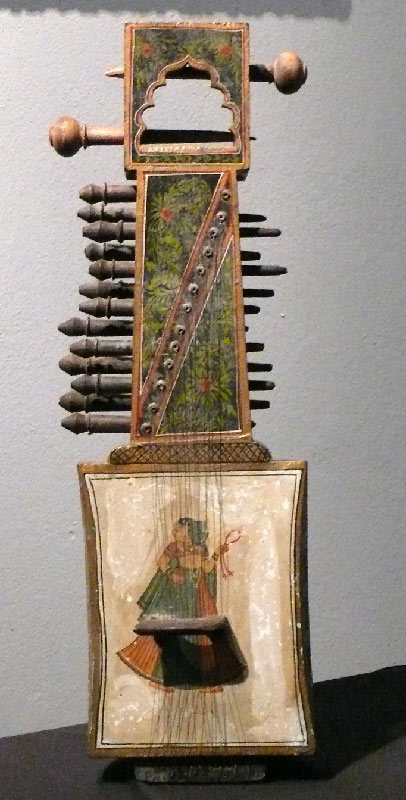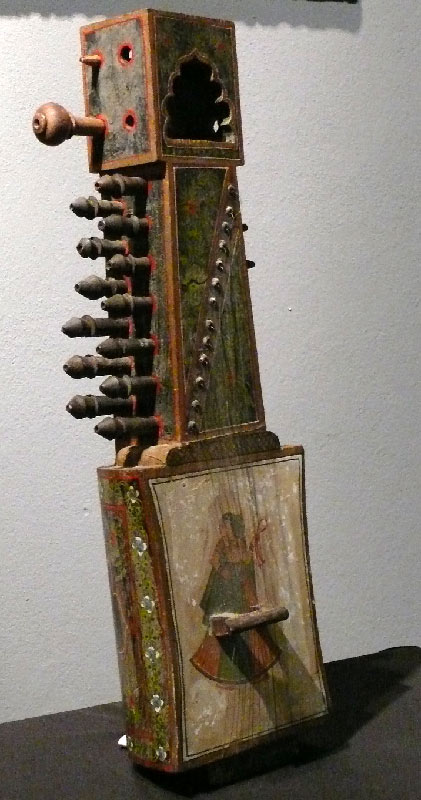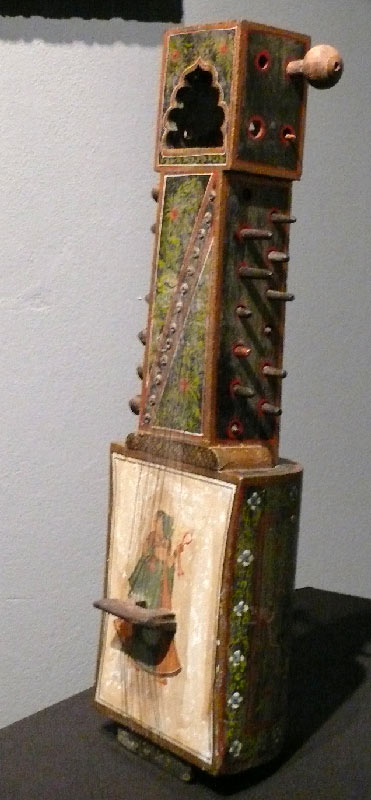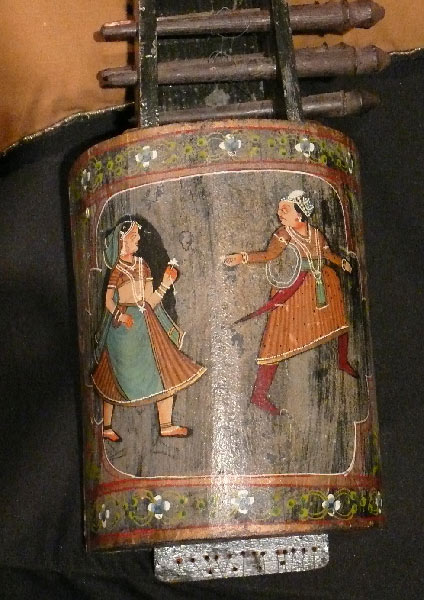Indian musical instrument
(saranji?)
with four playing strings and many sympathetic strings

In the wake of Western explorations during the 16th and 17th Centuries, exotic Oriental musical instruments were brought back to Europe. Instruments like this one, from India, supposedly inspired the European makers to experiment with the exotic sonorities produced by the metallic sympathetic strings, leading to the creation of the viola d'amore and the baryton or viola di pardone. Indeed, hardly a listener fails to succomb to their marvelous aetherial sounds.
| Body length | |
| Upper width | |
| Middle width | |
| Lower width | |
| Rib height | |
| String length |
updated


